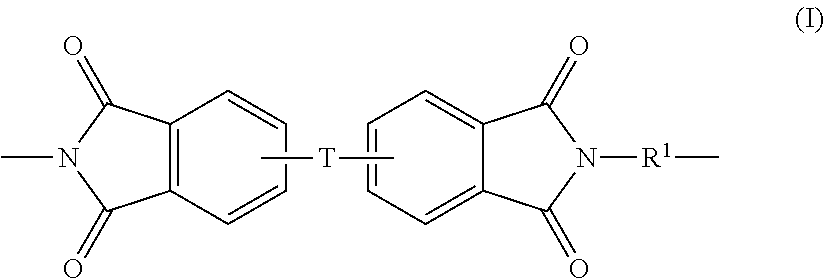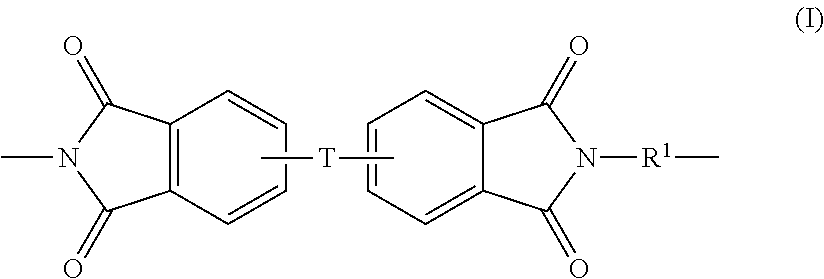Polyetherimide stitched reinforcing fabrics and composite materials comprising the same
- Summary
- Abstract
- Description
- Claims
- Application Information
AI Technical Summary
Benefits of technology
Problems solved by technology
Method used
Image
Examples
example 1
Preparation of Cured Composite Composition by Vacuum Assisted Resin Transfer Molding (VARTM) Process
[0040]Five to seven plies of the non-crimp fabric with polyetherimide stitches were layered and were sealed in a nylon vacuum bag film enclosure comprising a resin inlet and outlet under full vacuum (˜30 in Hg). A secondary bag was used to ensure a proper vacuum seal. RTM6 epoxy resin (from Hexcel, Dublin, Calif.) was heated to 80° C. and degassed under vacuum in a feed chamber. Prior to infusion, the vacuum on the feed chamber was reduced to ˜10 in Hg. The resin infusion into the fiber structure was started and the infusion was typically run at a temperature of 90° C. Resin flow was monitored during the infusion process which required about 30 minutes at the end of which time the resin was observed on the vacuum outlet to eliminate the air voids in the panel. Both inlet and outlet tubes were pinched off using Stapla tube sealer in order to maintain the high level of vacuum in the ass...
PUM
| Property | Measurement | Unit |
|---|---|---|
| Temperature | aaaaa | aaaaa |
| Temperature | aaaaa | aaaaa |
| Percent by mass | aaaaa | aaaaa |
Abstract
Description
Claims
Application Information
 Login to View More
Login to View More - R&D
- Intellectual Property
- Life Sciences
- Materials
- Tech Scout
- Unparalleled Data Quality
- Higher Quality Content
- 60% Fewer Hallucinations
Browse by: Latest US Patents, China's latest patents, Technical Efficacy Thesaurus, Application Domain, Technology Topic, Popular Technical Reports.
© 2025 PatSnap. All rights reserved.Legal|Privacy policy|Modern Slavery Act Transparency Statement|Sitemap|About US| Contact US: help@patsnap.com



